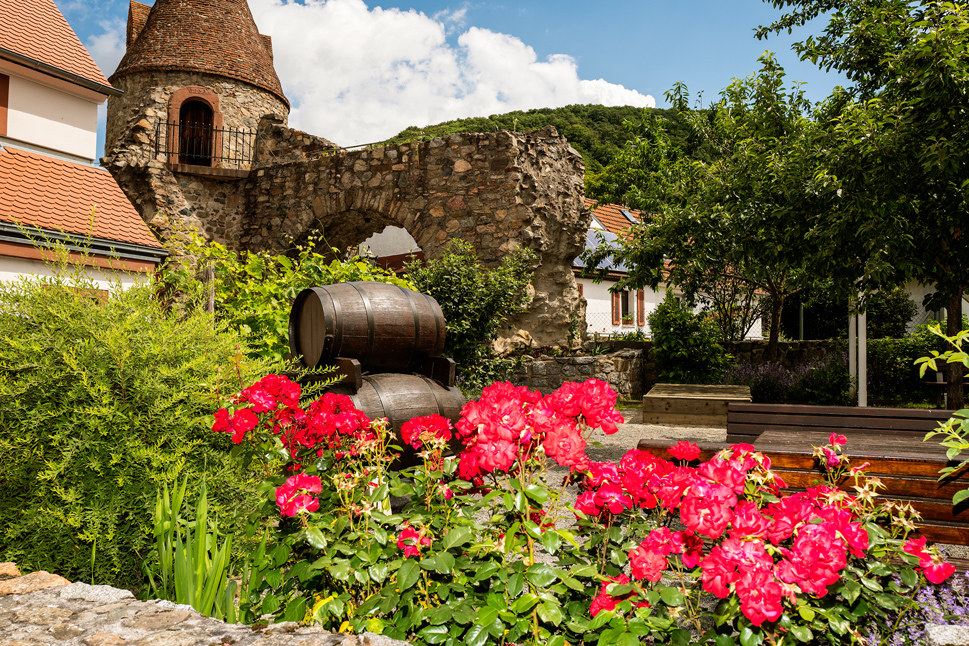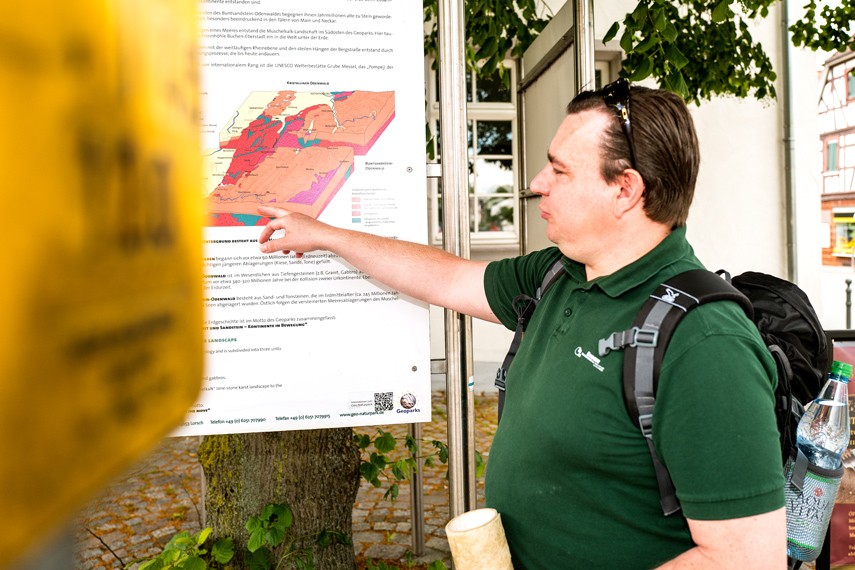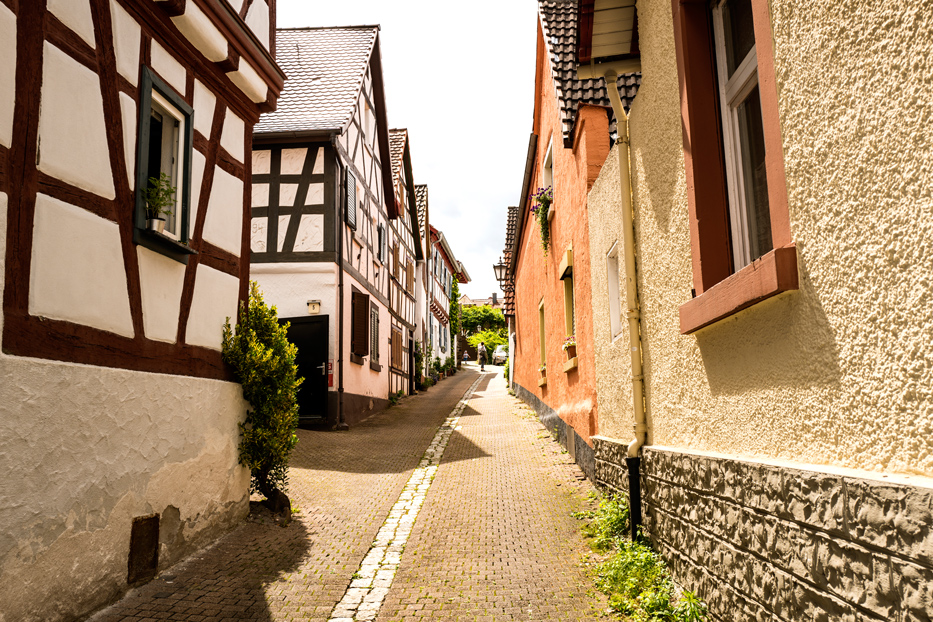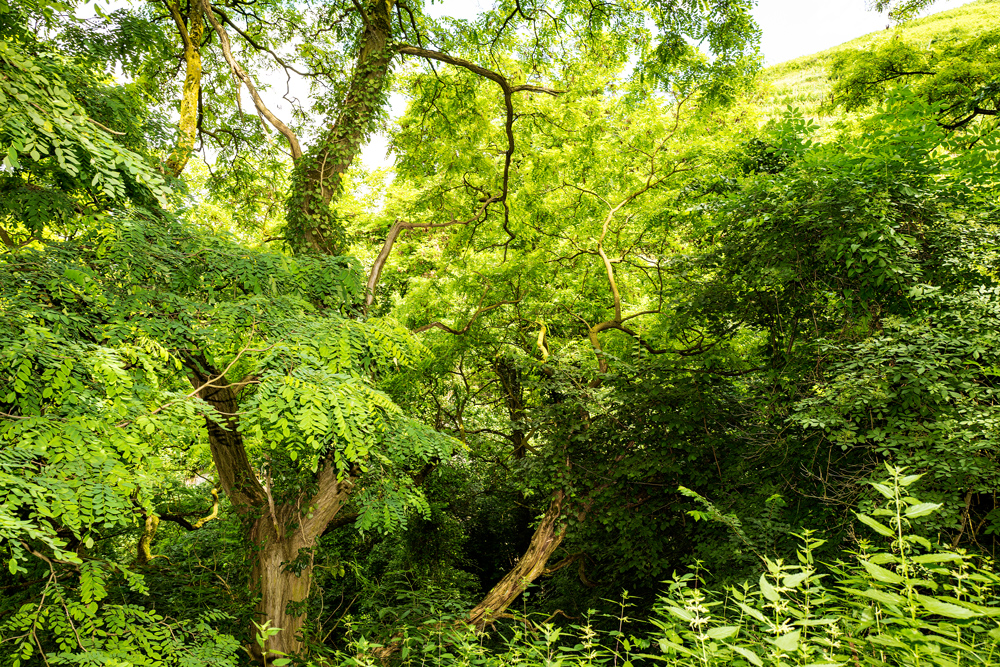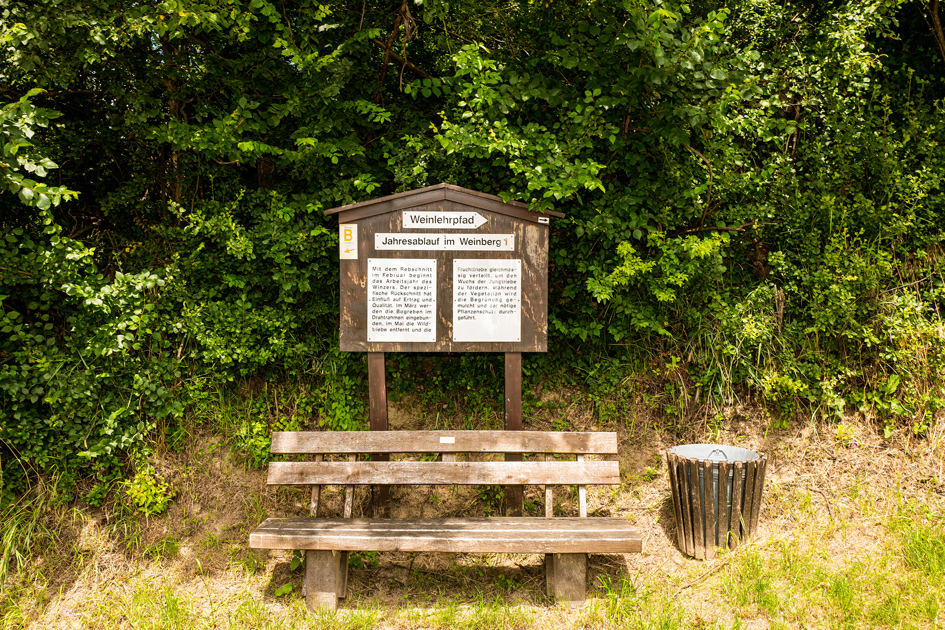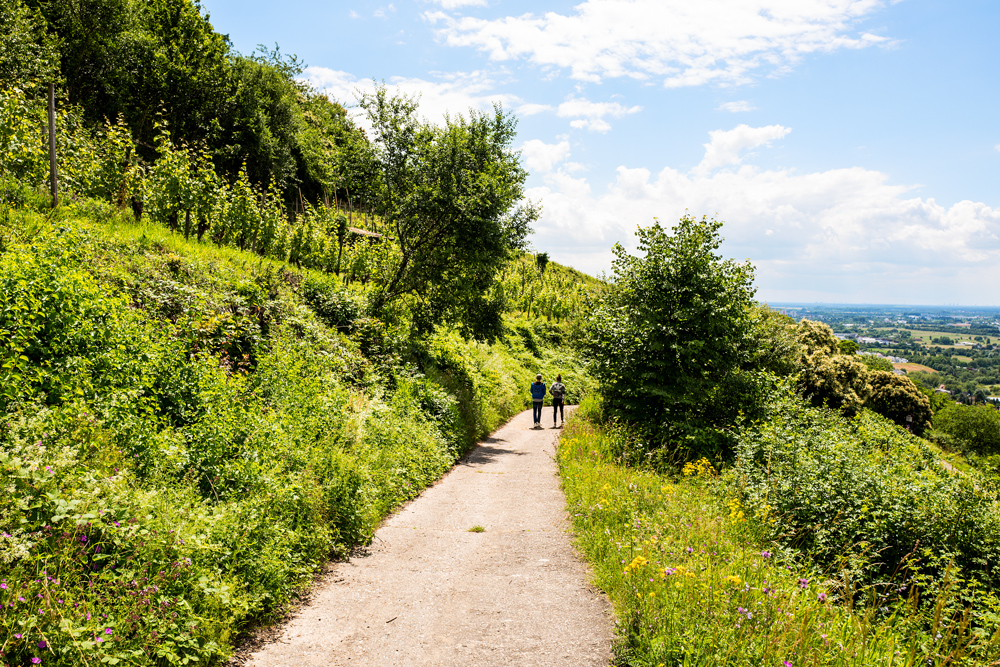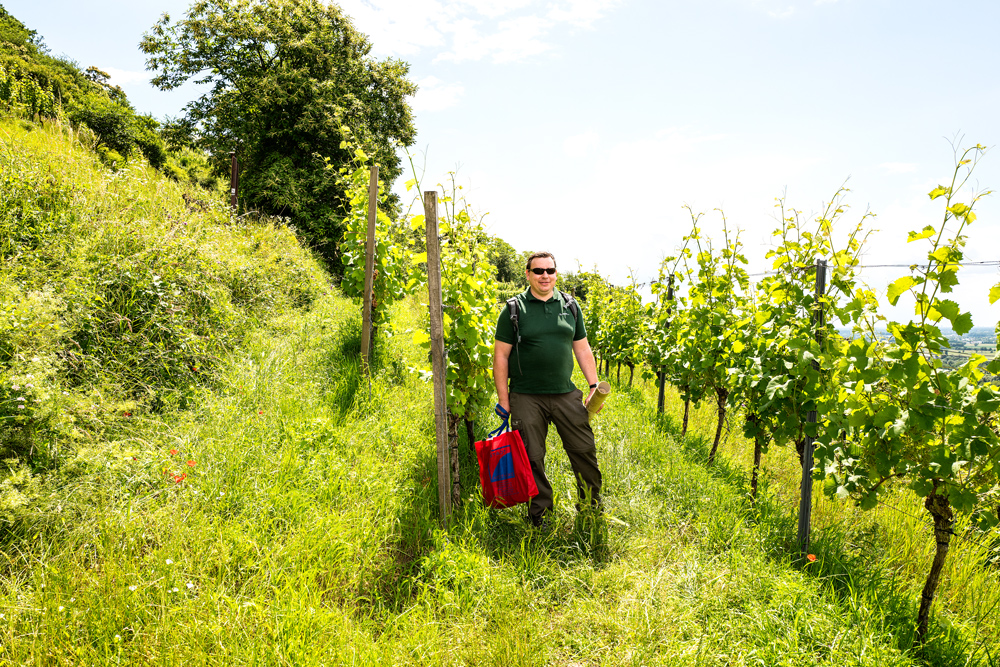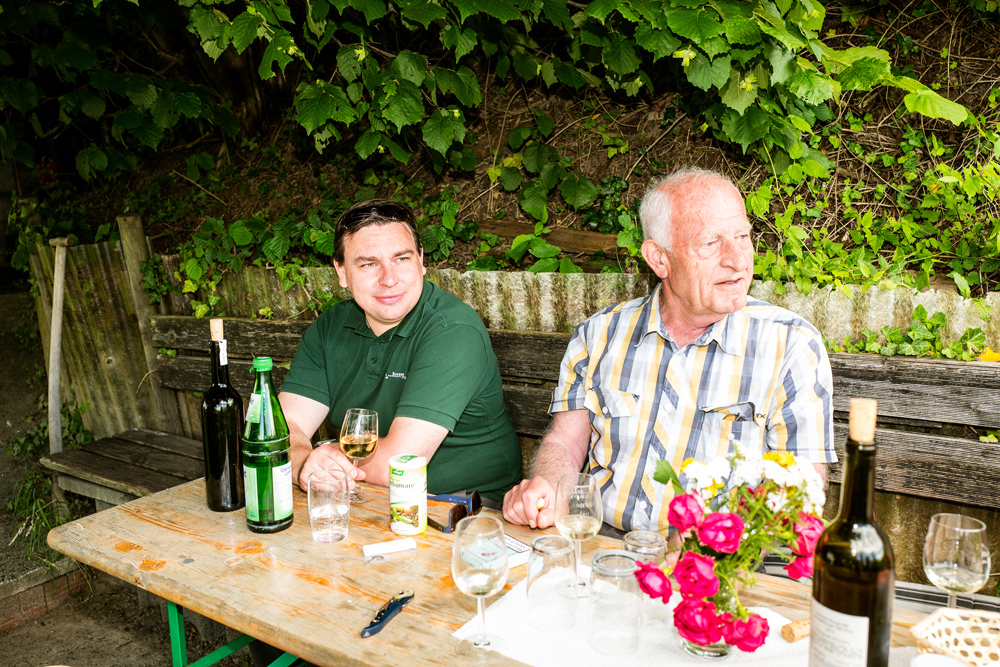Sometimes, you can’t see the wood for the trees when you’re deep inside of it. Unless you are accompanied by the Geopark Ranger Michael Kauer. He and 30 other rangers will guide you through the fascinating Geo-Naturepark Bergstrasse-Odenwald that was designated a “UNESCO Global Geopark” Site in 2015.
At the steepest part of the Hessische Bergstraße (Hessian Mountain Road), the vineyards climb up the steep slopes above the town of Zwingenberg so stunningly until they reach the woods, the Odenwald mountain woods. Every step made inside the Odenwald takes you deeper into geological history. Why is this so? Geopark Ranger Michael Kauer explains why in his tours with the temperament of a southern Hesse magma chamber. Bold groups of eager to learn people, often on a school or office outing, who display fierce determination, love following him. They meet in the small old part of the town in Zwingenberg.
Even down here, in the charming valley, Michael Kauer starts to find indications for geological peculiarities and historic-cultural faults everywhere. The bases of the old town buildings consist of rock, the churches and walls possess this anyhow. All of the rulers used to have rocks dragged here from their own dominions – be it the monks from Lorsch or the earls from Katzenelnbogen in the Taunus region. Michael Kauer detects everything. He draws conclusions and tells his audience about them.

On duty: Geopark-Ranger Michael Kauer
Born in Lautertal, Michael Kauer has a full-time job at the Frankfurt Zoological Society in succession of Bernhard Grzimek: What had once started with “Serengeti Shall Not Die”, the most famous of all eco initiatives, has now turned into a total of around 30 projects in 18 countries and with 300 staff members. This brings to mind the idea of wishing Michael Kauer all the best for adventurous business trips to exotic parts of the world. Which directly leads to one of the topics that the passionate Geopark ranger is an expert at: continents and their movement. If, on a tour with him up the Rhine Rift Valley, you seem to think that you know something and want to prove it by saying out loud: “I know it!”, you will soon retreat modestly into the background. There are no simple explanations here!
This is why today more than 30 voluntary rangers reveal the countless secrets of the Naturepark Bergstrasse-Odenwald that was founded in 1960 as one of the first nature parks in Germany. Its unique landscape possessing nature and geology that are well worth discovering and being protected, unfolds on a terrain that measures over 3,500 square kilometres between the rivers Rhine, Main and Neckar.
